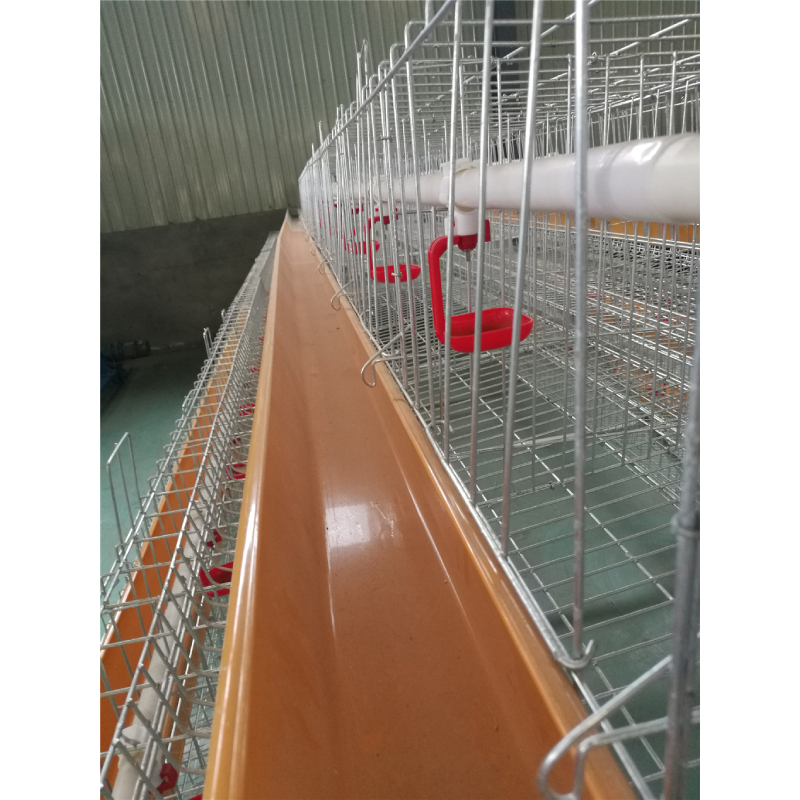Improving Welfare Standards for Broiler Chickens in Commercial Farming Systems
Jul . 27, 2024 01:24 Back to list
Improving Welfare Standards for Broiler Chickens in Commercial Farming Systems
The Welfare and Innovations in Broiler Chicken Cages
Broiler chickens, raised primarily for meat production, have become a significant part of the global agricultural industry. In recent decades, the demand for chicken has soared, leading to innovative farming practices aimed at maximizing production efficiency. One such innovation involves the use of specialized cages, often referred to as broiler chicken cages, designed to enhance growth while addressing animal welfare concerns.
Initially, broiler chickens were raised in open barns without significant space restrictions. However, as the industry evolved, so did the techniques for raising these birds. Broiler chicken cages emerged as a solution to streamline feeding, watering, and management processes. These cages allow farmers to house a larger number of chickens in a smaller area, ultimately leading to increased production rates and reduced costs.
However, the introduction of cages has raised ethical questions regarding the welfare of the birds. Critics argue that the confinement of broiler chickens in cages can lead to physical and psychological stress. This includes issues such as limited mobility, which can cause skeletal deformities and muscle atrophy. Additionally, the stress of overcrowding and lack of natural behaviors—such as roosting and foraging—can lead to increased susceptibility to diseases and behavioral issues.
In response to these concerns, the industry has started to adopt more humane approaches to broiler chicken farming. Many farmers are now transitioning to better-designed housing systems, often referred to as “enriched cages.” These systems provide more space per bird and include features that allow chickens to exhibit natural behaviors. For instance, enriched cages may include perches, nesting areas, and more room to move around, significantly improving the quality of life for the birds.
broiler chicken cage

Furthermore, advancements in technology have played a vital role in enhancing broiler chicken welfare. Modern farming practices now incorporate automation in feeding, watering, and monitoring the health of the birds. With the help of sensors and data analytics, farmers can ensure that chickens are receiving optimal nutrition, which is essential for both their health and the quality of the meat produced. This technology not only helps in maintaining the welfare of the chickens but also leads to better yield and profitability for farmers.
Sustainability is another critical aspect of the revamped approach to broiler chicken cages. The poultry industry is increasingly focusing on reducing its environmental footprint. By optimizing the space and resources used in chicken farming, the industry aims to minimize waste and energy consumption. The use of innovative feed formulations can also lead to more efficient growth rates, further supporting sustainability goals.
Consumer demand for ethically raised meat has prompted many poultry producers to certify their farming practices through welfare standards and labels. This shift indicates a growing awareness among consumers regarding animal welfare, leading to a rise in the purchase of products from farms that utilize enriched cages or free-range systems. Such practices not only cater to consumer preferences but also often result in better financial returns for the producers.
In conclusion, the evolution of broiler chicken cages reflects a broader shift towards integrating animal welfare with efficient production practices. While the traditional methods posed challenges for chicken welfare, the industry is gradually adopting more humane and sustainable approaches. Through innovative designs, technology, and consumer awareness, the future of broiler chicken farming promises to be more ethical and sustainable, benefiting both the birds and the individuals who consume their meat.
-
Hot Sale 24 & 18 Door Rabbit Cages - Premium Breeding Solutions
NewsJul.25,2025
-
Automatic Feeding Line System Pan Feeder Nipple Drinker - Anping County Yize Metal Products Co., Ltd.
NewsJul.21,2025
-
Automatic Feeding Line System Pan Feeder Nipple Drinker - Anping County Yize Metal Products Co., Ltd.
NewsJul.21,2025
-
Automatic Feeding Line System - Anping Yize | Precision & Nipple
NewsJul.21,2025
-
Automatic Feeding Line System - Anping Yize | Precision & Nipple
NewsJul.21,2025
-
Automatic Feeding Line System-Anping County Yize Metal Products Co., Ltd.|Efficient Feed Distribution&Customized Animal Farming Solutions
NewsJul.21,2025






